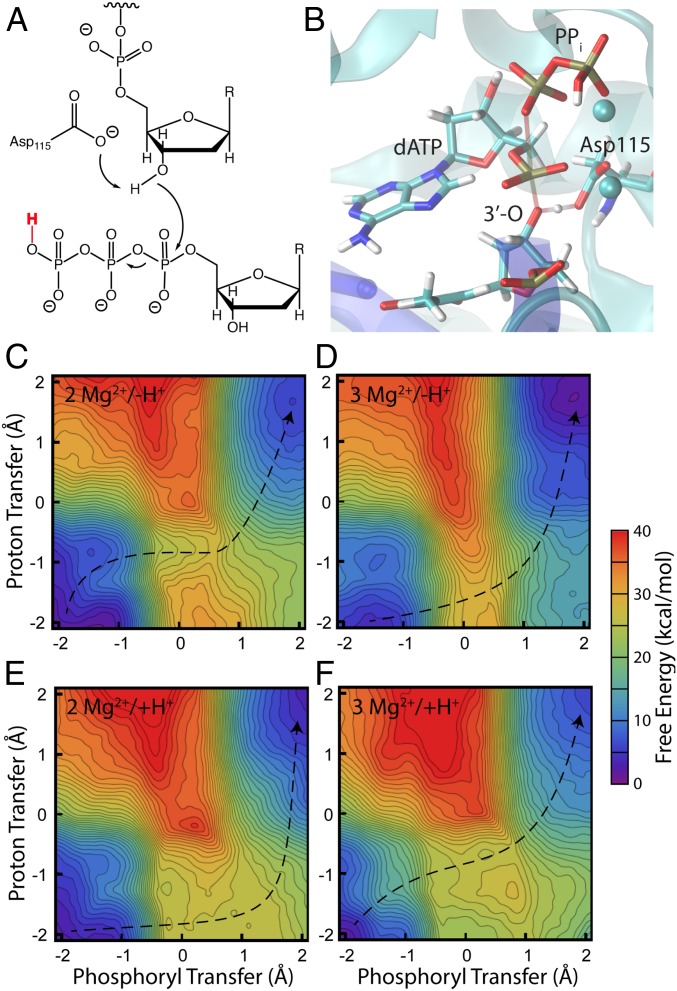Fig. 4.
Mechanism (A), transition state structure (B), and free-energy surfaces for nucleotide addition using Asp115 as a general base under 4 different conditions (C–F). The 4 conditions are: 2 Mg2+ and deprotonated leaving group (C), 3 Mg2+ and deprotonated leaving group (D), 2 Mg2+ and protonated leaving group (E), 3 Mg2+ and protonated leaving group (F). The large barrier heights under all 4 conditions indicate that this mechanism is unlikely. The structure in the Upper Right is representative of the transition state region for the reaction with 2 Mg2+ and a protonated leaving group, with the breaking and forming bonds shown as transparent. The phosphoryl transfer coordinate is defined as the difference in length of the breaking and forming O–P bonds, and the proton transfer coordinate is defined as the difference in length of the breaking and forming O–H bonds. The proton shown in red is only present in the Bottom simulations. The dotted lines guide the eye as to the minimum free-energy path from reactant to product; the transition state corresponds to the location of the maximum free energy along this minimum path.

